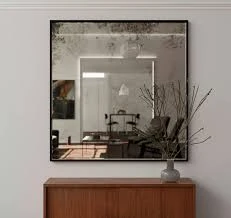

Embracing Mystery and Elegance The Allure of Black Reflective Glass
In an era where architectural trends continuously evolve, black reflective glass has emerged as a striking choice for both residential and commercial buildings. This captivating material plays a vital role in modern design, offering a seamless integration of aesthetics and functionality. Characterized by its dark, mirror-like surface, black reflective glass creates a visual depth that captivates the viewer while also serving practical purposes. This article explores the unique attributes, applications, and benefits of black reflective glass, illustrating why it has become a favored element in contemporary architecture.
The Aesthetic Appeal
One of the most compelling aspects of black reflective glass is its dramatic aesthetic appeal. It provides a sleek, sophisticated appearance that enhances the overall visual composition of a building. The deep, glossy finish of this type of glass not only reflects its surroundings but also creates an illusion of space and depth. When integrated into architectural designs, black reflective glass can transform ordinary structures into extraordinary masterpieces, exuding a sense of luxury and modernity.
Moreover, the reflective quality of the glass creates intriguing visual dynamics throughout the day. Under the bright sunlight, it shimmers and glows, effectively blending the building into its environment. In contrast, during the evening, the opaque quality of the glass allows for intriguing light play from within, giving the structure a vibrant and inviting aura. This duality makes black reflective glass a versatile material that can complement various architectural styles, from minimalist to industrial.
Practical Benefits
Beyond its visual appeal, black reflective glass offers several practical benefits. Its reflective nature enhances energy efficiency by reducing solar heat gain. This feature makes it an ideal choice for buildings located in warm climates, as it helps maintain a comfortable indoor temperature while potentially lowering air conditioning costs. Consequently, architects and builders are increasingly incorporating this glass into their designs to meet sustainability goals and comply with energy regulations.

Another notable advantage is its ability to provide privacy without sacrificing natural light. The reflective surface acts as a one-way mirror during the day, allowing those inside to enjoy unobstructed views of their surroundings while preventing outsiders from peering in. This aspect is particularly valuable in urban environments, where buildings are often in close proximity to one another.
Furthermore, black reflective glass is designed to withstand various weather conditions, making it an excellent choice for a wide range of climates. Its durability and resistance to fading, scratching, and staining ensure that it maintains its striking appearance over time, requiring minimal maintenance. This makes it a practical investment for builders and property owners alike.
Applications in Modern Architecture
The versatility of black reflective glass makes it suitable for a variety of applications in modern architecture. From high-rise buildings to residential homes, this material can be employed in windows, facades, and even interior partitions. Notably, its use in corporate offices and commercial spaces allows businesses to create environments that reflect their branding while promoting productivity and creativity.
Additionally, black reflective glass is increasingly being used in public structures, such as museums, galleries, and cultural centers. Its ability to create a harmonious interaction between architecture and the surrounding landscape makes it a preferred choice for designers aiming to craft spaces that are both functional and aesthetically pleasing.
Conclusion
Black reflective glass stands as a testament to the evolving nature of architectural materials. Its unique blend of aesthetic beauty and practical benefits makes it an exceptional choice for contemporary designs. As architects and builders continue to explore innovative applications of this versatile material, one thing is certain black reflective glass will remain a prominent feature in the landscape of modern architecture, captivating and inspiring those who encounter it. Through its alluring visual presence and functional advantages, black reflective glass not only redefines spaces but also enhances the experience of those who inhabit them, marrying form and function in a stunning display of craftsmanship.